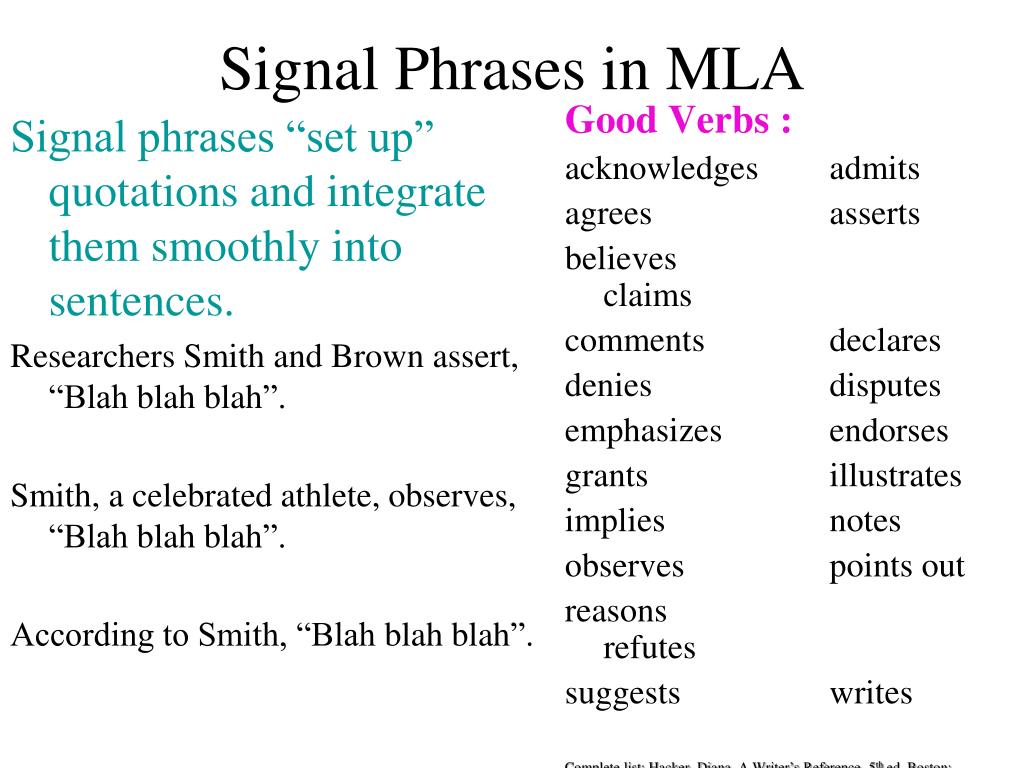

For MLA (as well as Chicago style), the same verbs can also be used in the present tense instead of the past tense, as the second section below shows. Keep things interesting for your readers by switching up the language and placement of your signal phrases. The examples in the first section are adapted to APA, which recommends past-tense verbs in signal phrases.

In the examples below, the author being cited is Jane Doe. Often, a well-placed word or phrase is necessary to guide readers. All a signal phrase is is some introductory text that precedes (and sometimes splits. However, a few select signal phrases contain no verbs (e.g., "According to ,"). As I keep mentioning, good writers are writers who know their options. In case youre wondering what a signal phrase is, let me start there. Often, signal phrases can be distinguished by the presence of a verb like "indicate" or "argue" that references what the author is doing in the original source. These expressions, which usually occur in the parts of sentences that come just before quotes and paraphrases, are called signal phrases (or, in some cases, lead-in phrases). It is relatively simple to use a wide variety of different expressions to introduce both direct and indirect citations. In most citation styles, including APA, MLA, and Chicago style, you can add variety to your research writing by not always using the same sentence structure to introduce quotations, paraphrases, or pieces of information borrowed from different sources. A signal phrase introduces an idea (or a proposition, argument, rebuttal etc.) which the writer found during her research. It is relatively simple to use a wide variety of different expressions to introduce both direct and indirect citations.


 0 kommentar(er)
0 kommentar(er)
